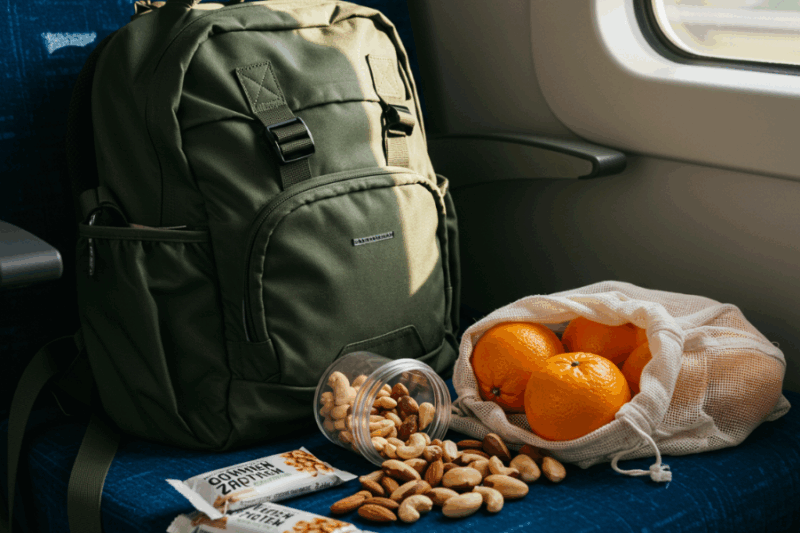Traveling offers a chance to explore new cultures and landscapes, but it can also bring stress from packed itineraries, language barriers, or unfamiliar settings. For minimalist travelers, practicing mindfulness enhances the journey by fostering presence and calm, using minimal tools to keep your carry-on light. Whether you’re wandering Hanoi’s bustling streets or meditating by Bali’s rice fields, these simple techniques help you stay grounded, requiring little time or gear. Here’s a guide to practicing mindfulness on the road, tailored for a budget-friendly, uncluttered travel experience.

Why Mindfulness Matters for Travelers
Mindfulness—being fully present in the moment—reduces travel anxiety, deepens cultural connections, and maximizes enjoyment. It counters distractions like jet lag or crowded markets, letting you savor experiences like a Lao temple sunset or a Thai street meal. On my Southeast Asia trip, 10-minute mindfulness practices saved me from overwhelm in chaotic Bangkok, keeping my daily costs low ($20–30) by avoiding stress-driven splurges. These habits align with minimalist travel, needing only a phone or notebook to enrich your journey.
1. Start Your Day with a 5-Minute Meditation
A brief morning meditation sets a calm tone for the day. In Luang Prabang, I sat by the Mekong for 5 minutes, focusing on my breath (inhale 4 seconds, exhale 4). Use apps like Insight Timer (free, offline mode) for guided sessions or simply observe sounds—birds, traffic, waves. No mat needed; sit on a hostel bed, park bench, or scarf ($5) from your pack. This practice requires zero extra gear, fitting a 20–30L backpack. How to Do It: Find a quiet spot at 7–8 AM. Close eyes, focus on breath, or use an app. If thoughts wander, gently return to breathing.
Why It Works: Calms the mind, reducing stress before busy travel days.
Time: 5 minutes.
2. Practice Mindful Eating
Travel is a chance to savor local flavors, and eating mindfully enhances the experience. In Hanoi, I focused on each bite of pho ($0.75), noting its herbs and broth warmth, ignoring my phone. Choose street food like Cambodian lok lak ($1–2) and eat slowly, noticing textures and smells. Avoid multitasking (e.g., scrolling X). Carry a reusable container ($10) for leftovers to minimize waste, aligning with minimalist principles. How to Do It: Pick a market stall (e.g., Vientiane’s Talat Sao). Sit, put phone away, and chew slowly, savoring 2–3 senses (taste, smell, texture).
Why It Works: Deepens cultural connection and prevents overeating, saving $1–3/day.
Time: 10–15 minutes/meal.
3. Take Mindful Walks
Walking mindfully turns city strolls or temple visits into meditative moments. In Kyoto, I walked Fushimi Inari’s torii gates, focusing on my steps and the forest’s sounds, not rushing for photos. Choose a market, beach, or park, and walk slowly, noticing your breath, footfall, or surroundings. No gear needed beyond comfy sandals ($10–20) or sneakers ($30–50) from your capsule wardrobe. How to Do It: Pick a scenic route (e.g., Chiang Mai’s moat). Walk for 10 minutes, syncing breath with steps (inhale 2 steps, exhale 2). Observe sights or sounds without judgment.
Why It Works: Grounds you in the present, reducing mental clutter.
Time: 10–15 minutes.
4. Journal with Intention
Writing one or two mindful sentences daily helps process experiences and stay present. In Bali, I jotted, “Grateful for Ubud’s rice field silence,” in a pocket notebook ($3) before bed. Reflect on a moment—what you saw, felt, or learned—without overthinking. This practice requires no extra space in your carry-on and doubles as a memory keeper for moments like a Vientiane sunset. How to Do It: At day’s end (8–9 PM), write 1–2 sentences about a meaningful moment. Use a notebook or phone notes app (free). Focus on sensory details or emotions.
Why It Works: Anchors you in the day’s experiences, fostering gratitude.
Time: 2–5 minutes.
5. Use Micro-Mindfulness Moments
Incorporate 1–2 minute mindfulness pauses during travel’s chaos—waiting for a bus, riding a tuk-tuk, or queuing at a temple. In Siem Reap, I focused on my breath for 60 seconds at Angkor Wat’s crowded gate, easing frustration. Try a body scan (notice tension in shoulders, relax them) or observe 3 things (e.g., a vendor’s smile, a motorbike hum). No tools needed, just your attention. How to Do It: Pause during downtime (e.g., Hanoi bus stop). Breathe deeply, scan body, or notice 3 sensory details. Repeat 2–3 times/day.
Why It Works: Resets your mind, preventing stress buildup.
Time: 1–2 minutes, 2–3 times/day.
6. Limit Digital Distractions
Constant phone use—checking X, snapping photos—pulls you from the moment. In Phnom Penh, I set a 30-minute daily limit for social media, using Freedom (free app) to block apps. Take fewer photos (5–10/day) and observe scenes directly, like a Kuala Lumpur market’s colors. Carry a lightweight phone with offline apps (Maps.me, free) to reduce reliance on data ($5–10/month for SIM). How to Do It: Set a social media timer (8–9 PM, 30 minutes). Put phone in airplane mode during activities. Focus on 1–2 senses (sight, sound) instead of snapping.
Why It Works: Keeps you present, enhancing memory retention.
Time: 1 minute to set up, ongoing.
Minimalist Travel Tips
- Pack Light: Use a 20–30L backpack ($50, e.g., Osprey Daylite) with sandals ($10–20), scarf ($5), notebook ($3), reusable container ($10), and water bottle ($15). Total <7 kg, carry-on compliant (22x14x9 inches).
- Budget Wisely: Mindfulness is free; daily costs stay low ($20–30: hostel $5–10, food $5–8, transport $2–5). Street food ($1–2/meal) saves $5–10/day vs. cafes.
- Stay Prepared: Download offline apps (Insight Timer, Maps.me, free). Carry a portable charger ($15–30) for phone use. Wash clothes with travel soap ($5).
- Cultural Respect: Practice quietly in shared spaces (hostels, buses). Learn greetings like “sabaidee” (Laos) to connect mindfully with locals.
- Combat Jet Lag: Use morning meditation to align with local time (e.g., 7 AM). Avoid caffeine after 4 PM to support sleep.
- Hostel Hacks: Meditate early (6–7 AM) to avoid dorm noise. Use earplugs ($3) for focus in shared spaces.
Why These Mindfulness Practices Work
These mindfulness techniques are tailored for travel, taking 10–20 minutes daily and using minimal gear (phone, notebook, scarf) to foster presence. They counter travel’s challenges—stress, overstimulation, or disconnection—ensuring you fully experience moments like a Thai street festival or a Cambodian temple. On my Laos trip, these habits kept me calm in Vang Vieng’s chaos, saving $20/week by skipping pricey bars ($3–5/drink) for free riverside walks. They align with minimalist travel, keeping your journey light and intentional.




olxxnu